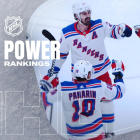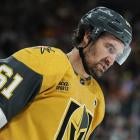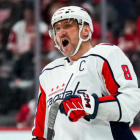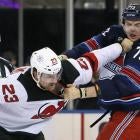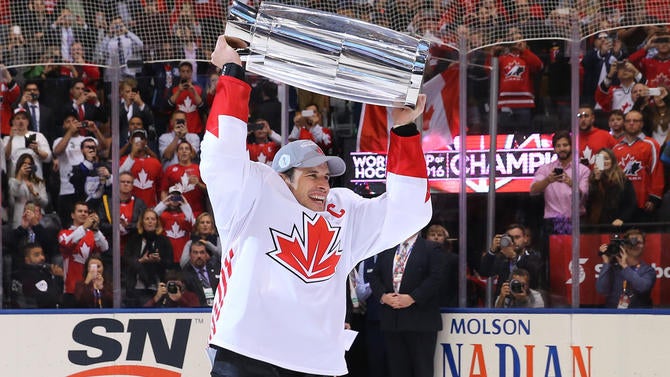
The 2016 World Cup of Hockey reached its expected conclusion with Canada skating off the ice with the trophy for which the tournament is named Thursday night. Aside from the unsurprising, and in some ways, anti-climactic ending to the tournament, there was more than enough compelling competition for hockey fans to consume.
It was not a rousing success by any means, but the league did not embarrass itself, either. What it did provide was a very competitive tournament with hockey of the highest quality. That's the least we should have expected from it, but most would agree that the quality of the tournament ended up even exceeded expectations.
There are other ways where the tournament fell flat. U.S. television ratings were not good and there were even more empty seats than you'd expect when plopping a tournament in the "Center of the Hockey Universe." Despite that, there was more good that came out of this than bad.
Considering that the alternative was meaningless preseason games featuring a lot of players fans aren't familiar with, this is about as good as it gets for hockey in September. It was the celebration of the sport that hockey fans deserved a time where they're just coming out of their summer hockey hibernation.
With all of that in mind, here's a look at five good things about the World Cup and a few of the things that leave little to be desired.
The Good
1. The overall competition level was better than ever
I remain a proponent of the NHL sending its players to the Olympics. It's a far bigger deal to the fans, both diehard and casual, and it means more to the players, too. That said, what the World Cup accomplished with this format was an exceptionally competitive tournament.
That's not to say Canada was ever threatened, because obviously they weren't, but there was not a team that could be qualified as "bad" in this tournament - USA jokes aside.
Yes, two teams finished 0-3, but there was only one real blow out in the whole World Cup. They happen on the regular in the Olympics when you have smaller nations with maybe one or two NHL players. Keep in mind, in 2018, South Korea will have a team in the tournament and it could be a bloodbath in those games. So fewer teams meant higher quality overall, which was the goal and it was achieved.
Team Europe, which had low expectations placed on them from the outside, made a run to the championship game with players who otherwise would probably never compete for a world title with their respective national teams.
2. Team North America
It's been more than a week since Team NA got bounced from the tournament and not a single thing happened over the course of the semis or championship series to convince me that they weren't the best thing about the tournament.
The 23-and-under players played the most exciting brand of hockey I've ever seen. I wasn't alive for the best Russian teams, so I don't have much to compare it to, but the speed, skill and creativity of these players was incredible. They won a lot of fans with their performances, showcasing the very best young talent the NHL has to offer.
Them missing out on the semis on a tiebreaker with Russia was legitimately sad. It would have been fun to see them go toe-to-toe with Canada.
Regardless, these guys were so much fun while they lasted and we may never see anything like it again.
THIS IS IMPORTANT
— #WCH2016 (@NHL) September 22, 2016
Morgan Rielly was mic'd up for @TeamNA_WCH's epic OT winner. #WCH2016pic.twitter.com/ubTteh5Mo2
3. The excellence of Marchand-Crosby-Bergeron
The reason we love best-on-best tournaments is to see combinations we otherwise wouldn't be privy to in a competitive environment. Watching Pittsburgh Penguins caotaub Sidney Crosby center Boston Bruins teammates Brad Marchand and Patrice Bergeron was one of those fantasy lines that turned out to be better in real life than anyone could have possibly dreamed.
Crosby led the tournament with 10 points, earning MVP honors. Brad Marchand scored five goals, including the stunning game-winner in the World Cup clinching game, while Bergeron scored the tying goal and made a litany of big plays throughout the tournament.
The three ended up accounting for 25 points for Team Canada at the World Cup. No one could stop them.
4. The ref cam
We had seen the ref cam used before on some of the early broadcasts Sportsnet produced and some of the outdoor games. We hadn't really seen it reach the quality and instantaneous highlights from that angle as we did in the World Cup, however.
Seeing the game from ice level allows fans to get a better appreciation for the speed and precision of the players. It also could be used to review crucial plays, like Anze Kopitar's late penalty in Game 2 of the World Cup Final. Seeing what the referee sees was a lot of fun.
Here is what the decisive game looked like from the referee's perspective:
Last night's #WCH2016 final is all its Ref Cam glory. pic.twitter.com/j10nKcSDK5
— #WCH2016 (@NHL) September 30, 2016
Let's hope that becomes a regular angle in NHL broadcasts soon.
5. Ralph Krueger and Europe
Team Europe did not play the most entertaining brand of hockey. In fact, some might go as far as calling it boring. But there was a lot that was compelling about them.
For one, Ralph Krueger whose NHL head coaching experience can be boiled down to leading the Edmonton Oilers over the 48 games of the lockout-shortened season before being unceremoniously fired over a Skype call with then-GM Craig MacTavish. Now the chairman of Southampton FC, Krueger is a man of many talents.
What he showed in this tournament is that he is a brilliant tactician. The structure with which Europe played made them one of the few teams equipped to challenge Canada. They were less than three minutes away from winning that game to force a Game 3 in the final.
How is that possible? The gap in talent was enormous between the two teams. It was because the combinations were put together perfectly, they played nearly without flaw and they got good goaltending. Krueger's influence was enormous. If he didn't have a better job already, you'd have to think Krueger would move up to No. 1 among coaches not currently in the NHL.
The other thing that struck me about Europe was how quickly that team of players from eight different countries came together. They bought in right away and became a team. The only way they could beat Canada was with every guy pulling his weight. They got as close as any team probably could have.
Tomas Tatar shared this about his experience:
There are lessons to be learned from that group.
The Bad
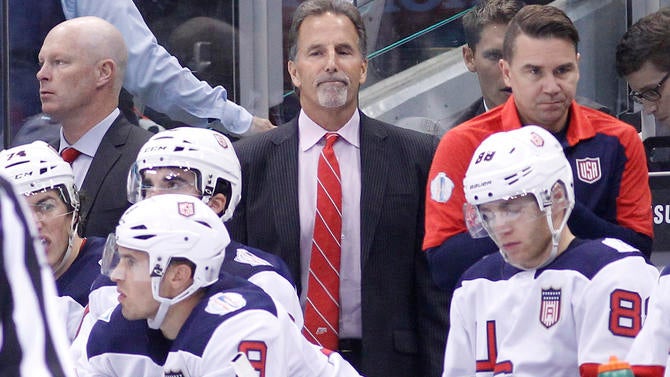
1. U.S. television ratings
If the NHL was trying to attract any casual fans with this national team format, the numbers suggest they didn't succeed there.
Putting the tournament on ESPN was the right move strategically. Get sports fans where they usually already are watching. Unfortunately for both ESPN and the NHL, Team USA's flame out quashed any chance of elevated U.S. TV ratings for the more meaningful games.
The biggest rating the network hauled in for the tournament was the USA-Canada preliminary-round game. That drew an audience of 766,000 according to SportsTVRatings.com. The USA-Europe game that kicked off the tournament drew 360,000 viewers for a Saturday afternoon game. The meaningless USA-Czech Republic game drew a paltry 148,000.
The first game of Canada and Europe's championship series drew 494,000 veiwers. Not even Crosby vs. Ovechkin in the Canada-Russia semifinal did great, with a total viewership of 353,000, but that was on a Saturday night against College Football. On the other hand, 3.1 million people tuned in to that Canada-Russia game north of the border on CBC.
Per NBC, the 105 regular-season games aired on their family of networks - which includes the more heavily viewed outdoor games - averaged 503,000 viewers during the 2015-16 season.
Fan interest for a tournament featuring the best players in the world on the most popular cable sports network just wasn't there even relative to normal regular-season games. But here's the other thing to remember, the NHL isn't getting hundreds of thousands of viewers to watch its product in September otherwise.
This event was not a TV success, but it shouldn't be considered a miserable failure either. And as a fan who came of age in the mid 1990s, it sure was nice to hear the ESPN Hockey Night music again.
2. Team USA
It took the U.S. exactly one game to put a significant damper on American hockey fans' interest in this tournament. The 3-0 loss to Europe, which doesn't look as bad now as it did at the time, was deflating. Any enthusiasm for the American team was lost and that had to have sapped interest in following along on TV.
Once the tournament reached the knockout stage, the page had been turned by most American sports fans.
3. The best-of-three final
When the league announced the best of three would be returning to decide the World Cup, it sounded promising. However, we all must have briefly forgotten about the juggernaut that is Canada.
Team Europe almost made it interesting in Game 2, but I'm not entirely sure that if this series went the distance I'd feel any differently than I do right now. By the time the tournament reached the final, it felt like any of the momentum built by previous games had been halted.
By going to a best-of-three, it made the climax of the tournament feel muted. Multiple-game finals absolutely are better for proving which of the last two remaining teams is better than the other, but the drama was completely stifled by it this time.
Why not guarantee yourself a "Game 7" kind of situation to finish the tournament? End on the highest-possible note. Game 1 is automatically a throw-away since nothing can be won. Then Game 2 was consumed by the aura of inevitability.
The 1996 World Cup of Hockey is the gold standard of this format. It worked for those teams at that time. The 2004 World Cup was a one-and-done and that was a very compelling championship game. Both ways have been proven to work. The best-of-3 fell flat this time. It's something to consider for the next time the league does this.
While the World Cup will never match the exposure of the Olympics, it showcased the game's best players, there were some great games and it gave hockey fans something to get through the often dreary month of September. Could it be better in the future? Probably, but this was a really good start after the 12-year hiatus.















